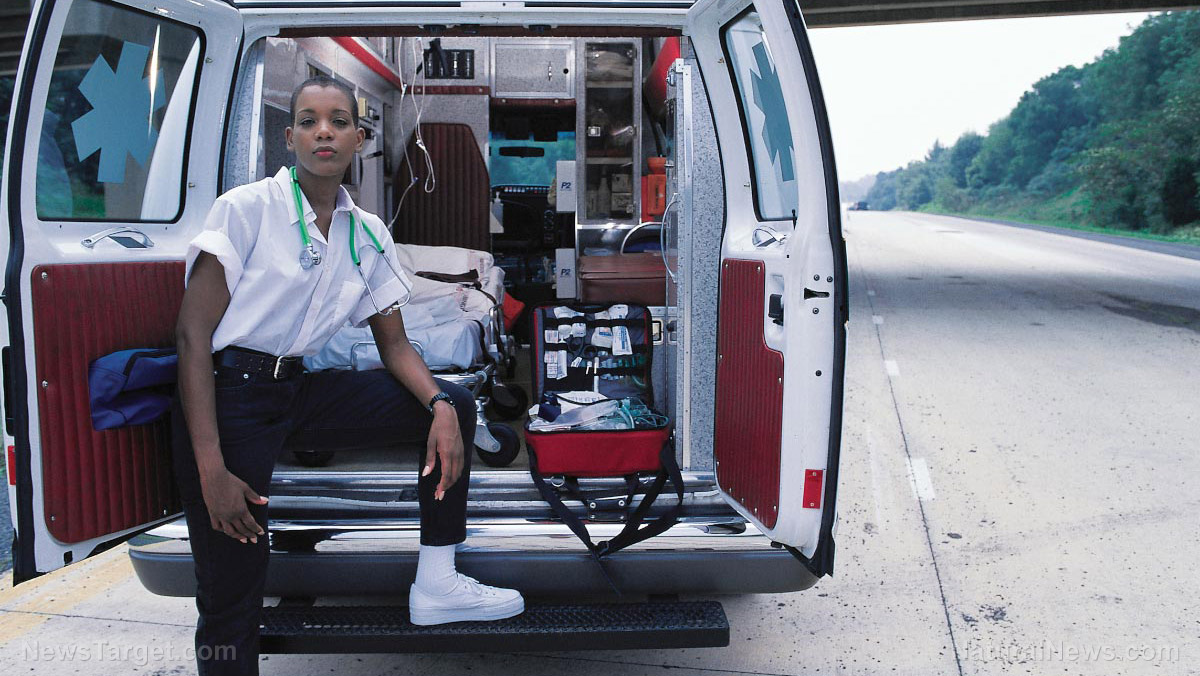Why you should think twice before calling an ambulance
05/15/2017 / By D. Samuelson

When there’s a medical emergency, the modus operandi is to call 911 and ask for an ambulance. In those tense moments, the last thing people think about is just how much that hospital ride might cost. After all, the insurance covers it, right? Well, not necessarily. Blogcredit.com tells the story of a woman whose car accident prompted an ambulance ride to the local hospital that cost $2,400. Several people have reported paying “upwards of $1000 for simple transportation between medical facilities,” even without the flashing red lights and sirens.
When the 911 call comes in, states Consumerist.com, the operator will “frequently dispatch an EMS ambulance,” which may, or may not take you to a hospital that is “in-network,” that is one that accepts your insurance. Depending on the area of the country you live in, those agreements between local governments, insurance companies and ambulance providers can vary dramatically. Sometimes, even Medicare beneficiaries have to pay a pretty penny, according to a 2012 report from the U.S. Government Accountability Office. Ambulance transport prices for Medicare patients ranged from $224 – $2204. Those costs have only increased since.
Just like the growth of big pharma, the business of ambulances, emergency care, and emergency medical services (EMS) training have grown in complexity and cost. EMS service is light years away from the volunteer days of 1960s, according to John, an emergency medical technician (EMT) in his conversation with Blogcredit.com. Today, it costs $100,000 to manufacture an ambulance. It’s basically a mobile hospital with $10,000 heart monitors, $12,000 defibrillators, $4000 stretchers, and a myriad of other life-saving medical supplies. The highly skilled EMTs have to be on call 24/7. All of this leads to high costs.
100% organic essential oil sets now available for your home and personal care, including Rosemary, Oregano, Eucalyptus, Tea Tree, Clary Sage and more, all 100% organic and laboratory tested for safety. A multitude of uses, from stress reduction to topical first aid. See the complete listing here, and help support this news site.
In other words, don’t call the ambulance if it’s a minor problem that herbal remedies and emergency supplies can handle. Additionally, if the patient can be safely transported by a friend or family member to the emergency room, don’t call 911.
Some remote areas of the country must depend on air ambulance services for medical emergencies. Butte, Montana is such a place. The Atlantic tells the story of 2-year-old Isla Thomson, who had to be transported via helicopter to a Seattle hospital 600 miles away, due to her failing heart. Isla survived and the Thomson’s thought their insurance covered the ride. They were shocked when a $56,000 bill arrived. After many conversations, appeals and turmoil, their insurance company paid $30,000 and an out-of-network fee of $13,000, and the “air ambulance would waive the rest of the fee.” But not all endings are that happy.
It’s wise to discuss just how your particular hospital or insurance provider works with the local EMS providers so you can estimate what charges might occur, should you ever require services. If you’ve already received an ambulance bill, medical billing expert Adria Goldman Gross suggests, “you should be prepared to negotiate.” To begin, look over the bill’s medical codes carefully to see if it reflects the services you received. Gross uses the “Medicare fee schedule as a benchmark.” Prepare to make many phone calls, says Gross, because if “you’re being overcharged, it can be worth the fight.” Additional strategies include negotiating a monthly payment, or seeing if repayment assistance is available.
In today’s ever changing and volatile society, calling 911 may not be an option. Why not sign up for a layman’s class in emergency medicine, or learn what medical supplies to have in your prepper bag? While no one can predict when an accident may occur, each of us can learn how to stay as healthy as we can in the meantime. Considering our bodies are 50 – 70 percent water, drinking clean, non-fluoridated, non-chemical water from a Berkey Water Filter is a great way to start.
Sources include:
Tagged Under: ambulance prices, caling 911, emergency medicine, high prices ER rides, medical bill strategies




















